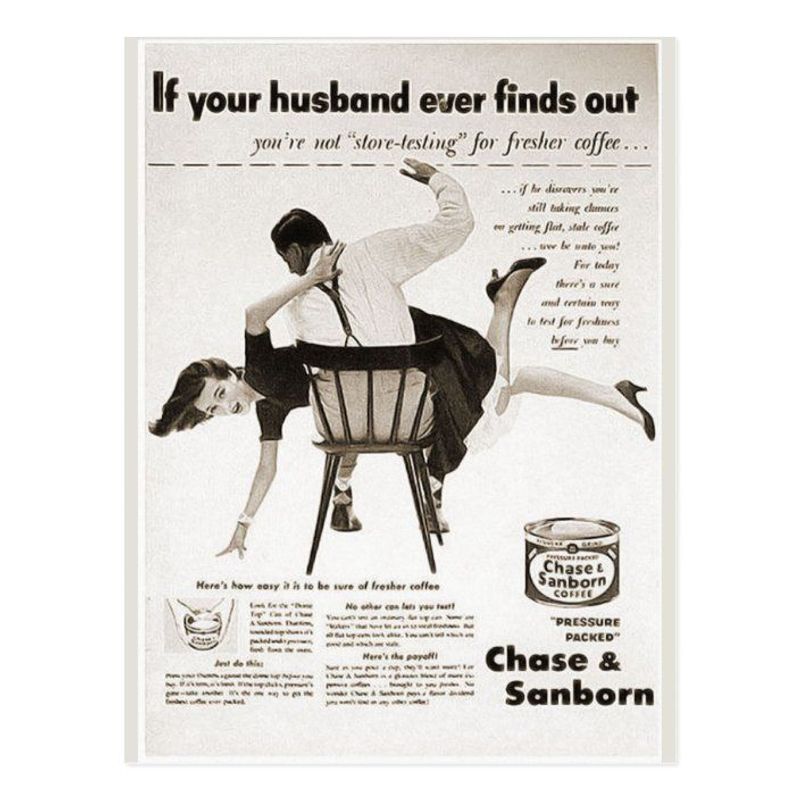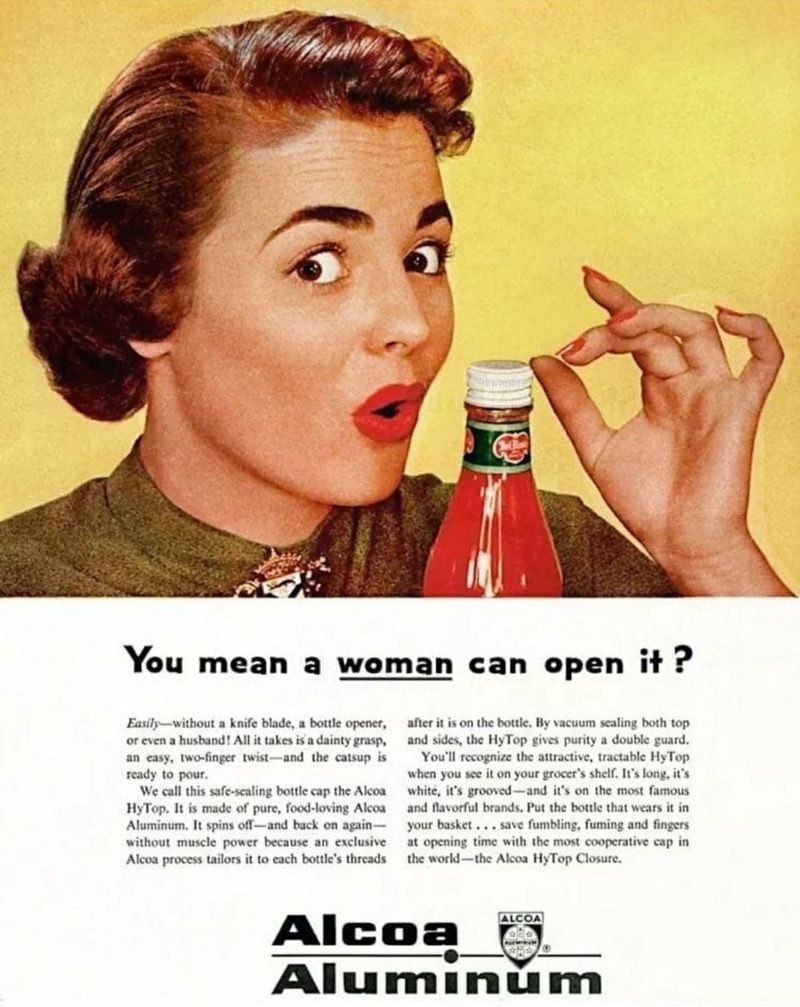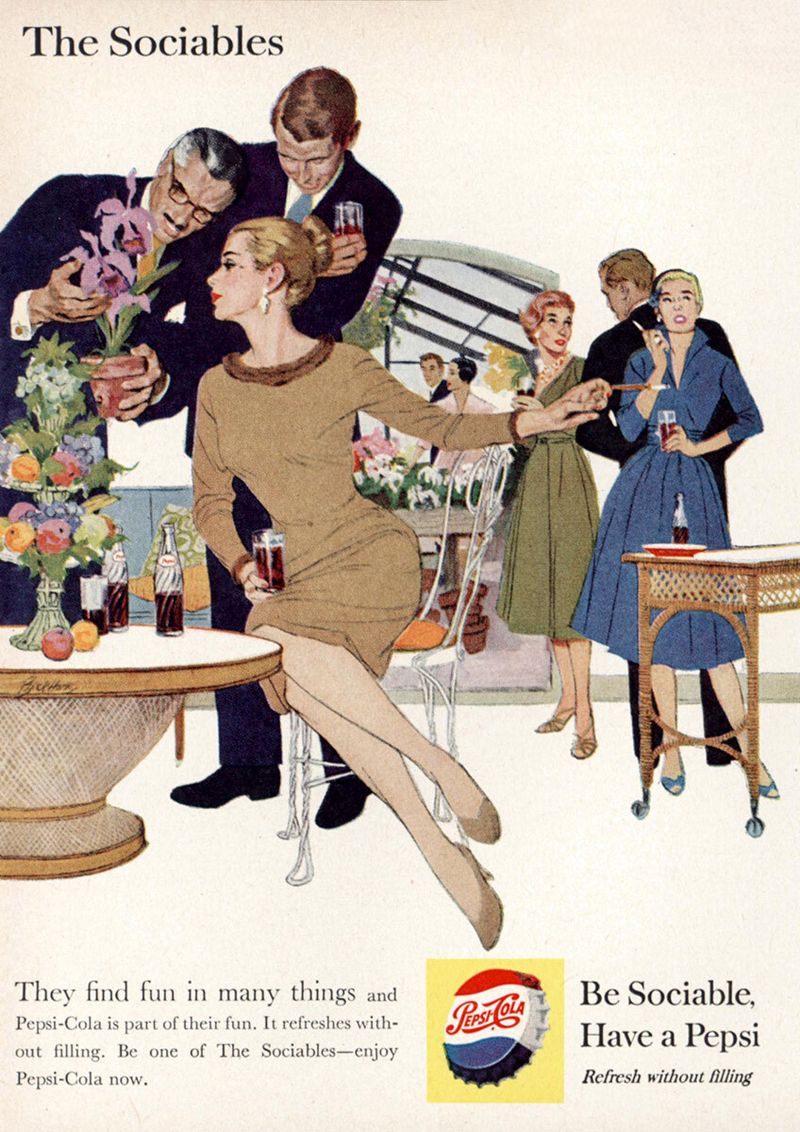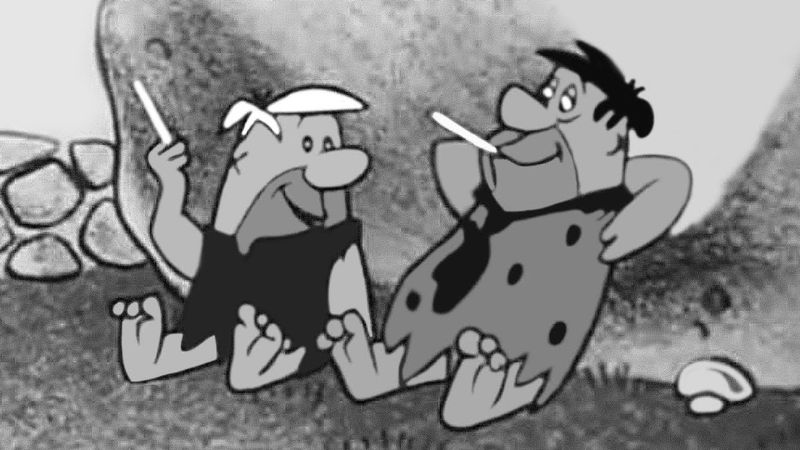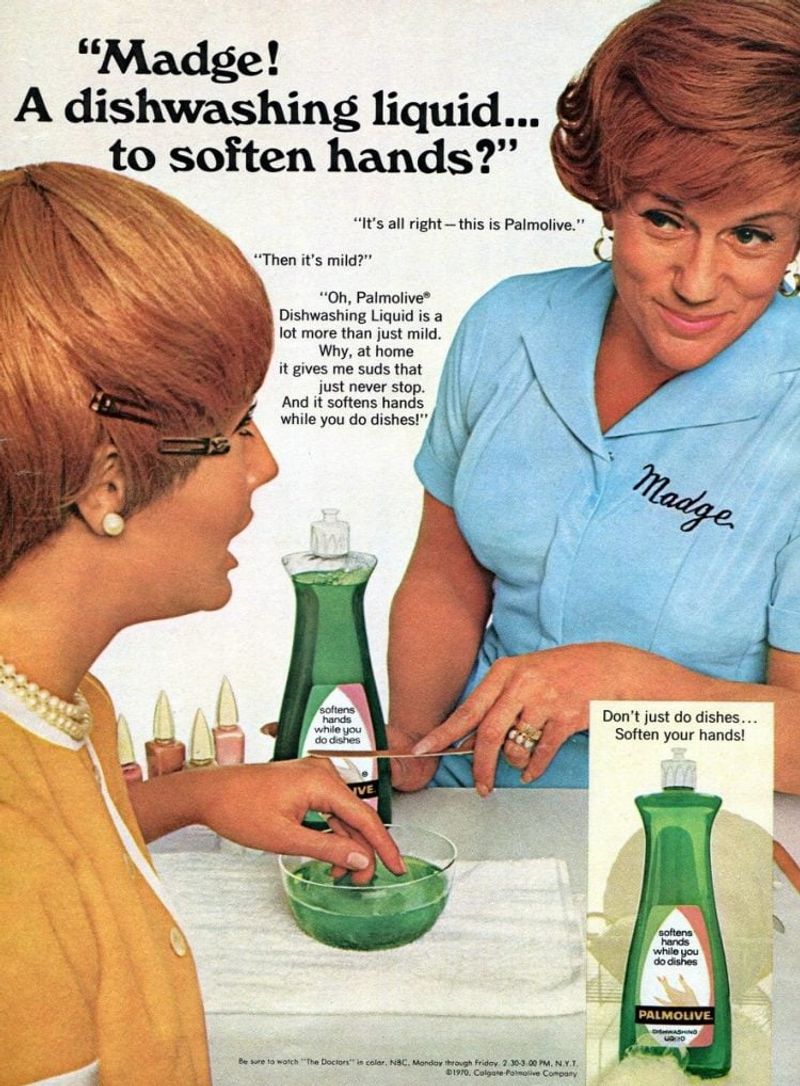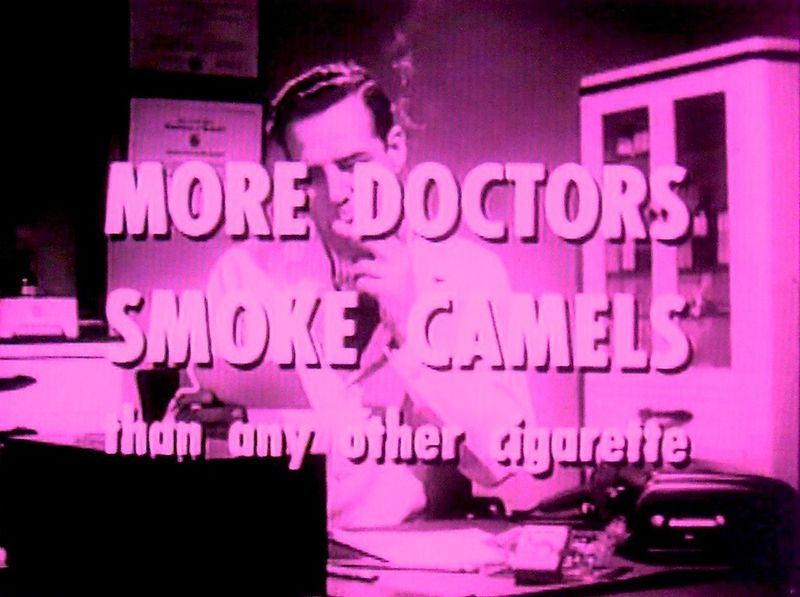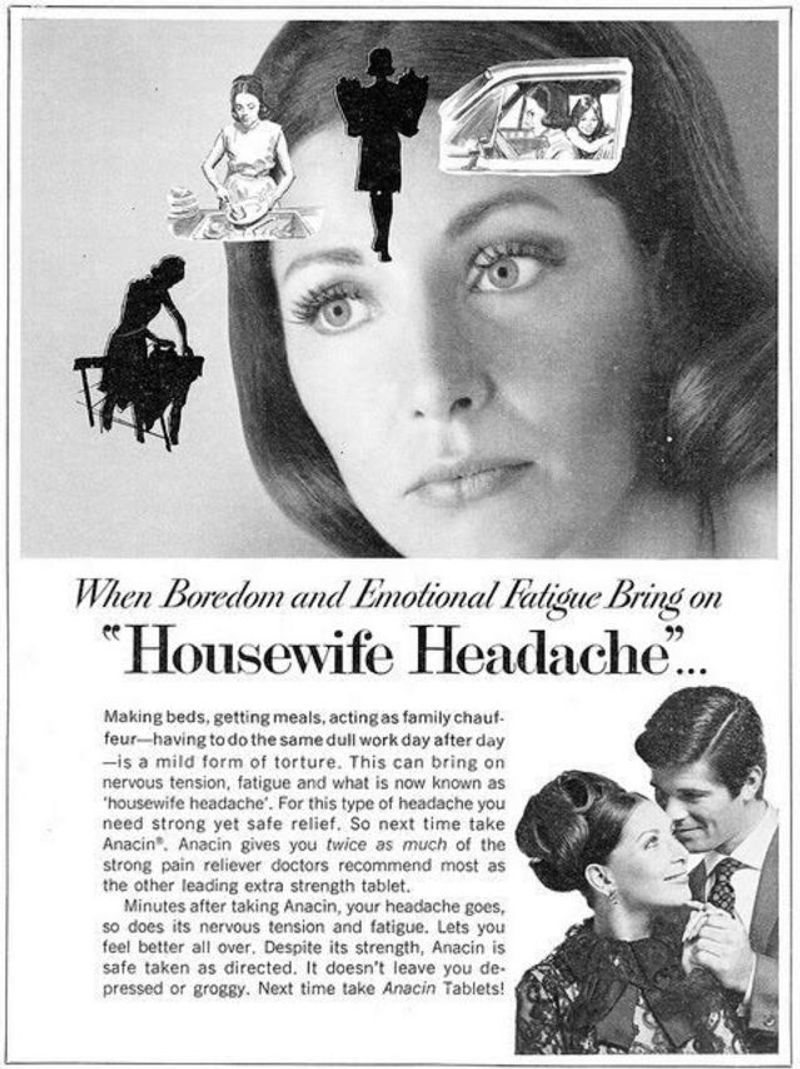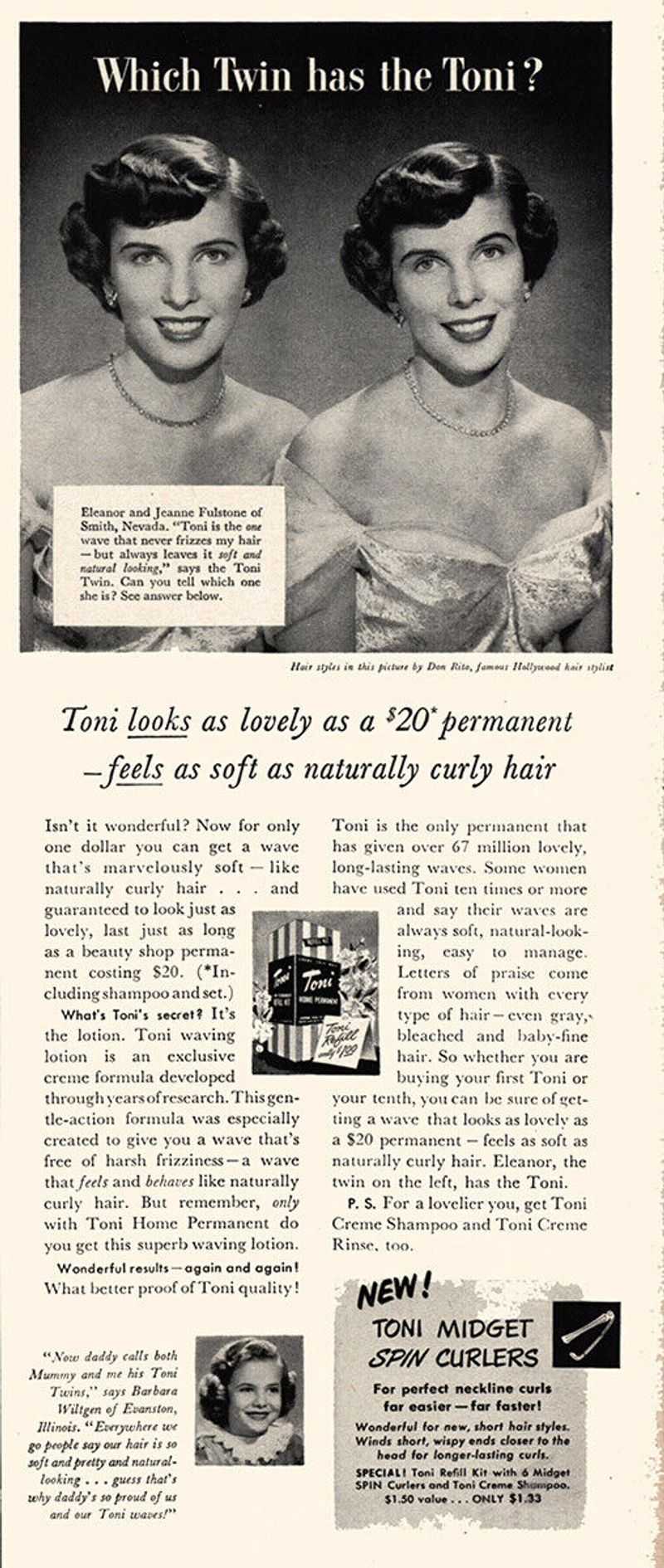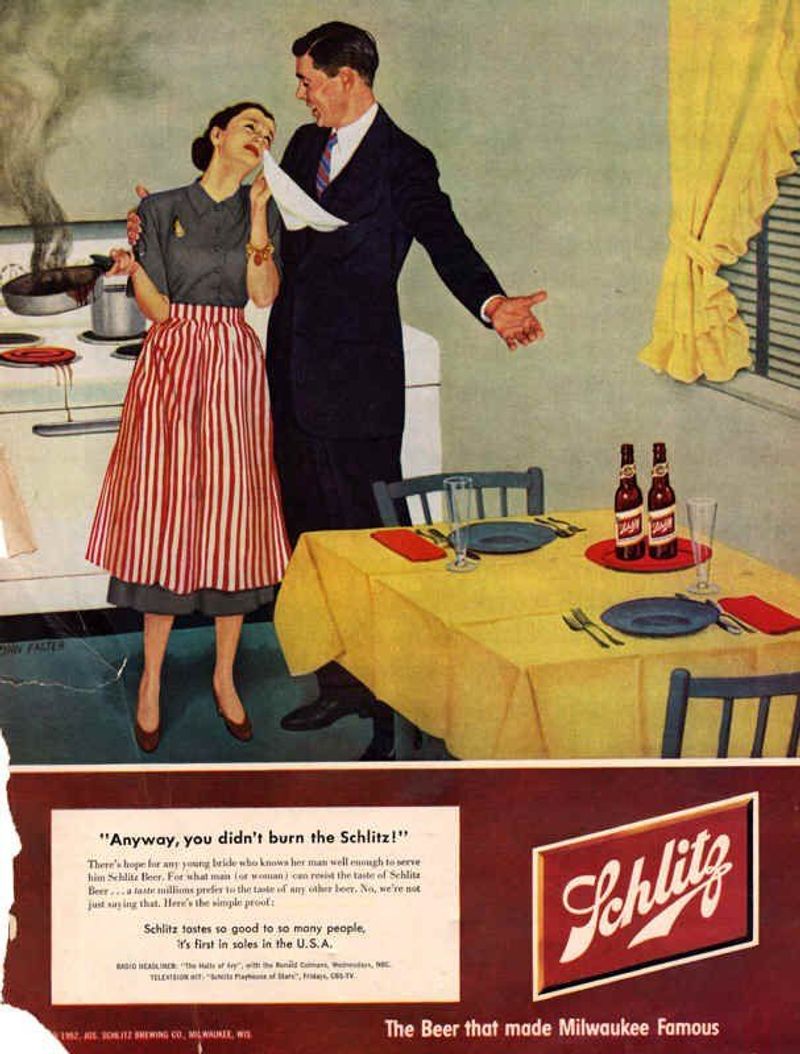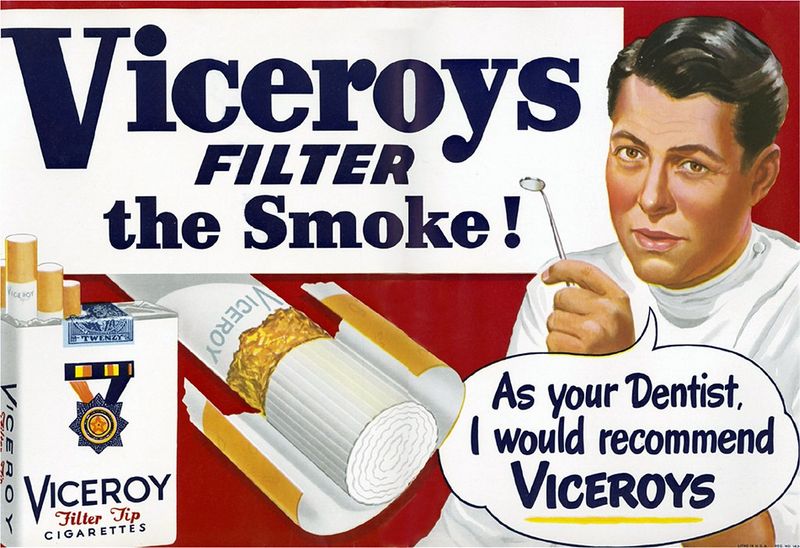The 1950s were a golden age of advertising, from glowing magazine spreads to catchy television jingles. Brands weren’t shy about making bold claims—or leaning into social norms that now seem shockingly outdated. While many of these ads are remembered for their style and charm, they also reflect attitudes that would never make it past today’s editorial desks or broadcast censors. From cringeworthy copy to questionable endorsements, here are 13 unforgettable ’50s and ’60s ads that would be banned, reimagined, or fiercely debated in today’s world.
1. Ajax’s “White Knight” Saves the Helpless Women
The white knight motif came to life in Ajax’s commercial, where a knight galloped in to save housewives from cleaning woes. This literal interpretation of the damsel-in-distress trope underscores the outdated gender roles, portraying women as incapable of managing household tasks without male intervention. Such narratives would be criticized today for their reinforcing stereotypes. Modern advertising seeks to empower, encouraging shared responsibilities and portraying both genders as capable and independent.
2. Chase & Sanborn’s “Wife-Spanking” Coffee Ad
In a shocking portrayal of domestic life, Chase & Sanborn’s ad featured a husband spanking his wife for buying the wrong coffee. This outrageous depiction of domestic violence highlights the normalized sexism prevalent in mid-century marketing. Advertisers used shock value to captivate audiences, often at the expense of perpetuating harmful stereotypes. Today, such content would be condemned for promoting violence and sexism, reflecting how far societal norms have evolved in promoting equality and condemning abusive behavior.
3. Alcoa Aluminum’s “You Mean a Woman Can Open It?”
This patronizing ad celebrated the easy-open aluminum cap by exclaiming, “You mean a woman can open it?” Such language underscores the ingrained gender stereotypes of the era, portraying women as weak and incapable. Advertisers capitalized on societal norms that limited women’s roles and abilities. Today, this kind of stereotyping would incite outrage, prompting calls for more respectful and inclusive representations of gender. Advertisements now aim to empower rather than belittle, marking a significant shift in social consciousness.
4. Pepsi: “Be Sociable, Have a Pepsi”
The seemingly innocuous tagline “Be Sociable, Have a Pepsi” subtly implied that women should use Pepsi to attract and serve men. In an era where women were often relegated to domestic roles, this ad reinforced the notion that their social value was tied to pleasing others. Such messaging would now be scrutinized for its underlying implications about gender roles. Modern audiences demand more nuanced and equitable portrayals, where products are not tools of conformity but expressions of individuality.
5. The Flintstones for Winston Cigarettes
In a surprising crossover, cartoon icons Fred and Barney were shown enjoying Winston cigarettes. This blend of children’s animation with adult products highlights a blatant disregard for marketing ethics concerning young audiences. Today, such a campaign would spark immediate backlash for targeting minors with tobacco advertising. Regulations now strictly prohibit such associations, recognizing the influential power of media on impressionable minds and prioritizing the protection of children from harmful substances.
6. Palmolive Dish Soap’s Beauty Claims
Palmolive dish soap wasn’t just promoted for cleaning dishes—it was touted as a skincare savior. The character Madge the manicurist would tell women their hands were unattractive until Palmolive worked its magic. This blend of beauty standards with household products illustrates the era’s narrow definition of femininity. Today, advertising aims to diversify and celebrate all forms of beauty, moving beyond the limiting standards of the past that equated worth with appearance.
7. 7-Up for Babies
In a shocking health misstep, a campaign once suggested mixing 7-Up with baby formula. Such advice starkly contrasts with present-day health standards, where pediatricians emphasize the importance of proper nutrition for infants. This ad is jarring to modern sensibilities, highlighting past ignorance in dietary recommendations. Today’s marketing prioritizes transparency and safety, ensuring that products marketed for children meet stringent health regulations to protect their well-being and development.
8. Camel Cigarettes Endorsed by Doctors
“More doctors smoke Camels than any other cigarette.” This infamous claim would raise eyebrows today. Health professionals endorsing tobacco products seem absurd now, yet in the 1950s, it was a marketing tactic that added credibility. Doctors, seen as trustworthy figures, were used to alleviate health concerns about smoking. The normalization of smoking through medical endorsements reflects a bygone era oblivious to today’s stringent tobacco advertising regulations. Now, such strategies are not only unethical but illegal, preventing misleading health claims from influencing public opinion.
9. Anacin’s “Nagging Wife” Headache Remedy
Anacin’s ad addressed marital discord by suggesting a husband take a pill to cope with his “nagging” wife. This depiction trivialized women’s voices and contributed to gender inequality by positioning women’s concerns as nuisances. Today, such portrayals would be criticized for perpetuating harmful stereotypes about marital relationships. Advertising now leans towards promoting healthier dynamics and mutual respect, acknowledging the importance of communication and understanding in partnerships.
10. Toni Home Permanent Twins Ad
Toni’s ad featuring twins emphasized that no one could tell who had the salon perm and who used Toni’s home kit. While seemingly innocuous, it reinforced the idea that a woman’s worth lay in her appearance. The emphasis on beauty as an achievement reflects outdated ideals that placed undue pressure on women. Today’s advertising seeks to break such molds, promoting diversity and self-expression over conforming to narrow beauty standards.
11. Schlitz Beer’s Obedient Housewife
In this ad, a woman frantically worries over a ruined dinner but finds redemption by offering her husband a Schlitz beer. The narrative suggests beer as a solution to marital issues, trivializing genuine relationship dynamics. This portrayal underscores historical gender roles where women were expected to placate and serve. Modern advertising avoids such simplistic solutions, instead promoting equality and understanding, recognizing that both partners contribute to relationship harmony.
12. Viceroy Cigarettes’ “Tooth-Friendly” Message
Viceroy’s ad claimed dentists preferred these cigarettes for their “scientific filter,” suggesting a bizarre link between smoking and dental health. Today, such health claims in tobacco ads are not merely unethical but illegal, as we’ve become aware of the detrimental impact of smoking. This past marketing strategy reflects an era of misinformation and highlights the evolution towards stringent regulations. Modern advertising is bound by laws ensuring honesty and consumer protection.
13. Old Gold Cigarettes with Dancing Girls
Old Gold cigarettes used flashy dance routines with scantily clad women to sell their product, relying heavily on sexual innuendo. This strategy, once accepted, is now seen as objectifying and disrespectful. Today’s audiences demand advertisements that respect and empower rather than exploit. The evolution of advertising reflects society’s growing insistence on ethical marketing practices that uphold dignity and equality for all individuals, irrespective of gender.


